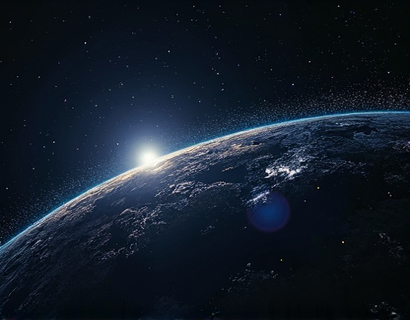Advanced Technology for Detecting AI-Generated and Altered Content
The rise of artificial intelligence has brought about unprecedented capabilities in content creation, but it has also introduced significant challenges in verifying the authenticity of visual media. The ability to generate and alter images using AI poses a threat to the integrity of digital content, affecting various sectors including digital media, brand management, security analysis, legal compliance, journalism, and education. This article delves into the advanced technology designed to detect AI-generated and altered images, offering a comprehensive solution to ensure the authenticity and integrity of digital media.
The Need for AI Image Authenticity Verification
The proliferation of AI tools capable of creating highly realistic images has made it increasingly difficult to discern genuine content from fabricated material. This has led to a growing need for robust verification methods that can reliably identify manipulated or AI-generated images. The consequences of unverified visual content can be severe, ranging from reputational damage for brands to misinformed public decisions in journalism and education. Professionals across various fields require sophisticated tools to navigate these complexities and maintain trust in digital communications.
How AI Generates and Alters Images
AI-generated images, often referred to as deepfakes, are created using deep learning algorithms that can synthesize realistic images or videos by learning from large datasets. These algorithms can manipulate facial features, environments, and even entire scenes with remarkable accuracy. Altered images, on the other hand, involve post-processing techniques to modify existing content, such as photo editing software that can seamlessly blend elements or apply filters to create misleading visuals. Understanding the methods behind AI-generated and altered images is crucial for developing effective detection technologies.
Advanced Detection Technologies
The technology for detecting AI-generated and altered images leverages a combination of machine learning, computer vision, and signal processing techniques. These systems analyze images at multiple levels, from pixel patterns to metadata, to identify inconsistencies and anomalies that indicate manipulation. Key features of these advanced detection tools include:
- Deep Learning Models: Trained on vast datasets of genuine and manipulated images, these models can recognize subtle patterns and features that are indicative of AI involvement.
- Metadata Analysis: Examining the metadata of images can reveal signs of tampering, such as unusual file formats or inconsistent timestamps.
- Consistency Checks: Analyzing the internal consistency of an image, such as lighting, shadows, and reflections, can help detect alterations.
- Content Analysis: Evaluating the context and content of an image, including text and objects, can provide additional clues about its authenticity.
These technologies are continuously evolving, incorporating new algorithms and techniques to stay ahead of sophisticated manipulation methods.
Applications Across Various Fields
The importance of AI image authenticity verification extends across multiple domains, each with its unique challenges and requirements:
Digital Media and Content Creation
In the digital media industry, ensuring the authenticity of visual content is paramount. Content creators, editors, and publishers rely on verification tools to maintain the credibility of their work. These tools help prevent the spread of misinformation and protect the integrity of media platforms.
Brand Management and Marketing
Brands must safeguard their reputation against manipulated images that can mislead consumers. Verification tools enable brands to monitor their online presence, detect fake reviews or product images, and ensure that their marketing materials are genuine and trustworthy.
Security Analysis
In the realm of security, the detection of AI-generated images can have significant implications for national security and law enforcement. Verification tools assist in identifying fake documents, altered videos, and other forms of digital deception that could be used for malicious purposes.
Legal Compliance and Journalism
Legal professionals and journalists depend on the authenticity of visual evidence to support their cases and stories. Advanced verification tools provide a reliable means to authenticate images and videos, ensuring compliance with legal standards and maintaining journalistic integrity.
Education and Research
In educational settings and research, the ability to verify visual content is crucial for academic integrity and the accuracy of research findings. Verification tools help students and researchers identify and avoid using manipulated images, promoting a culture of honesty and transparency.
Benefits of Advanced Image Verification
The implementation of advanced image verification technology offers numerous benefits across various sectors:
- Enhanced Trust: By ensuring the authenticity of visual content, these tools build trust among consumers, stakeholders, and the public.
- Improved Decision-Making: Accurate verification of images leads to better-informed decisions in business, legal, and journalistic contexts.
- Reputation Protection: Brands and individuals can protect their reputations by detecting and addressing manipulated content promptly.
- Compliance and Security: Verification tools help organizations meet regulatory requirements and enhance their security measures against digital threats.
Challenges and Future Directions
Despite the advancements in image verification technology, several challenges remain. AI-generated content is becoming increasingly sophisticated, requiring continuous updates and improvements to detection algorithms. Additionally, the balance between privacy and verification must be carefully managed to avoid infringing on individual rights. Future research should focus on developing more robust and adaptable verification methods, as well as exploring the ethical implications of these technologies.
Conclusion
The ability to detect AI-generated and altered images is essential in today's digital landscape. Advanced verification technologies provide a powerful solution to ensure the authenticity and integrity of visual content, benefiting professionals in digital media, brand management, security analysis, legal compliance, journalism, and education. As these tools continue to evolve, they will play a critical role in maintaining trust and accuracy in an era of sophisticated image manipulation.



